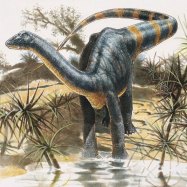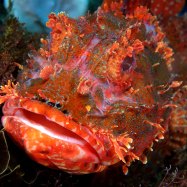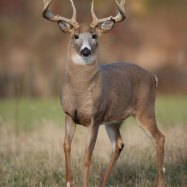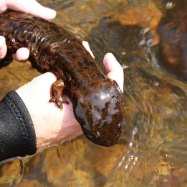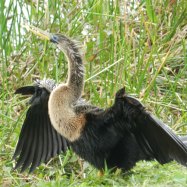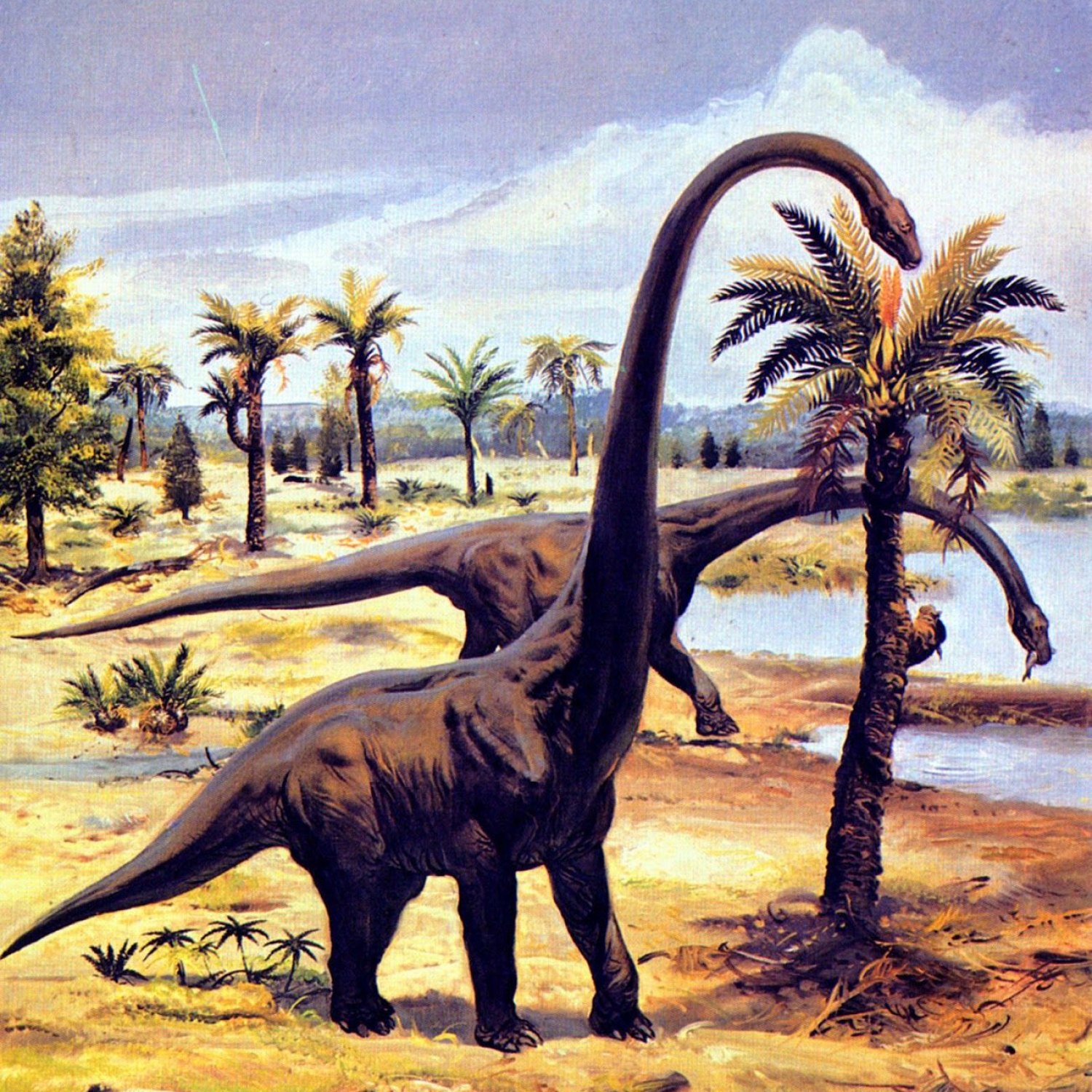
Barosaurus
Up to 85 feet
Barosaurus, a member of the Diplodocidae family, was a massive dinosaur found in the western United States. With a body length of up to 85 feet, it was one of the longest known land animals. Its long neck and tail allowed it to reach vegetation high above the ground. Fascinate your mind with facts about this incredible animal and its history. #Barosaurus #Diplodocidae #DinosaurFun #WesternUS #JurassicWorld
Animal Details Summary:
Common Name: Barosaurus
Kingdom: Animalia
Habitat: Terrestrial
The Magnificent Barosaurus: A Herbivore of Enormous Proportions
Barosaurus, a name derived from the Greek words “heavy” and “lizard”, is a spectacular species of herbivore that roamed the earth over 150 million years ago, during the Late Jurassic period. This is the time when dinosaurs ruled the planet, and Barosaurus was a mighty creature that reigned alongside some of the most iconic dinosaurs such as the Brachiosaurus and the Stegosaurus.Barosaurus, a member of the Diplodocidae family, is a majestic dinosaur that has fascinated scientists and the general public alike. It is said to be one of the largest known dinosaurs, with an impressive length of up to 85 feet, making it longer than two school buses parked end to end! This magnificent animal has captured the imagination of many, and its unique features have made it a subject of extensive research and discussion Barosaurus. So, let’s dive into the world of Barosaurus and learn more about this ancient giant that once walked on earth.
Physical Characteristics
Barosaurus was a sauropod, which means it was a long-necked and long-tailed dinosaur. Its long neck, measuring up to 30 feet in length, was one of its most distinct features. This powerful neck allowed Barosaurus to reach vegetation at heights that other herbivores could not access. Its body was supported by four sturdy, column-like legs that helped it move its enormous weight of up to 20 tons. Barosaurus had a relatively small head in proportion to its body and was adorned with a short, broad snout.The most striking feature of Barosaurus was its long, whip-like tail, which helped it maintain balance and possibly defend against predators. It is believed that the tail was also used as a weapon, much like the modern-day elephants use their trunks to protect themselves. Barosaurus had a greyish-brown color, which is similar to many of today’s large herbivores such as elephants and rhinoceroses Bowfin.
Habitat and Distribution
Barosaurus lived in a terrestrial habitat, which means it lived and moved on land. It is believed that Barosaurus was a migratory animal, moving from one area to another in search of food and favorable living conditions. Fossil discoveries have revealed that Barosaurus roamed the earth specifically in North America, in the western United States. It is thought that this region was a perfect habitat for Barosaurus due to its mild climate and abundant vegetation.This area was also home to many other iconic dinosaurs, such as the Allosaurus and the Diplodocus, making it a diverse and thriving ecosystem during the Late Jurassic period. The discovery of Barosaurus fossils in this region has helped scientists piece together the puzzle of its existence and understand more about its behavior and lifestyle.
Diet and Feeding Method
Barosaurus was a herbivore, meaning it fed solely on plants. Its long neck allowed it to reach the highest tree branches to access fresh, nutritious leaves. The size and strength of its jaws and teeth indicate that it could easily strip the foliage from trees and chew through tough plant material. Scientists also speculate that Barosaurus could have fed on ferns and horsetails, which were abundant during the Late Jurassic period.This herbivorous lifestyle is one of the reasons why Barosaurus grew to be such an immense animal. Eating a diet rich in nutrients and calories allowed it to gain weight and reach its impressive size. It is estimated that Barosaurus needed to consume around 880 pounds of food every day to maintain its massive body.
Discovery and Naming
Barosaurus was first discovered in 1890 by Othniel Charles Marsh, an American paleontologist, in the Morrison Formation of Utah. He described the fossils as belonging to the Diplodocus genus, a close relative of Barosaurus. However, in 1912, another paleontologist named John Bell Hatcher discovered a more complete skeletal structure of the same species. Further research and analysis revealed that this specimen was different from Diplodocus and belonged to a new genus, which was subsequently named Barosaurus.The most significant difference between Barosaurus and Diplodocus was its size, making Barosaurus the largest known dinosaur at the time. The discovery of Barosaurus has also contributed to our understanding of how dinosaurs evolved, and how they were distributed across the earth during the Late Jurassic period.
Adapting to Life on Land
Barosaurus’s evolution to become a terrestrial animal and its ability to thrive in this environment is a testament to its incredible adaptability. The change from the aquatic lifestyle of its ancestors to living solely on land required significant changes in its anatomy and behavior. Scientists believe that Barosaurus’s long neck was a consequence of living on land, where a more extended reach was needed to access food.Its powerful legs also allowed it to support its massive weight and move around comfortably on land. Moreover, the development of its digestive system also enabled Barosaurus to break down and digest the bulky plant material efficiently. These adaptations helped Barosaurus survive and thrive in its environment for millions of years.
Possible Social Behavior
As with most dinosaur species, there is much speculation about the social behavior of Barosaurus. Scientists believe that they may have traveled in herds, much like many of today’s herbivorous mammals. The presence of a young Barosaurus fossil with an adult suggests that they may have formed family units and provided care to their young.Barosaurus may have also used different sounds and body language to communicate with each other, similar to how modern-day elephants communicate within a herd. These social behaviors could have been crucial for their survival, particularly when defending against predators.
An Ongoing Fascination
The discovery of Barosaurus and its incredible features continues to fascinate people to this day. It has become a popular figure in movies, books, and toys, making it one of the most recognizable and beloved dinosaurs. However, there is still much to learn about this ancient giant, and scientists continue to study new fossil discoveries in the hopes of revealing more about its past.Barosaurus is not just a fascinating creature; it also holds valuable information for our understanding of Earth’s history. Studying its evolution, behavior, and physiology can help us unravel the mysteries of the past and make intriguing connections between the past and present. The legacy of Barosaurus will continue to live on through our fascination and fascination with this magnificent dinosaur.
The Barosaurus represents a time when dinosaurs ruled the earth, and it will forever be a symbol of the awe-inspiring diversity of life on our planet. Its colossal size, unique anatomy, and incredible adaptability are qualities that have captured our imagination and will continue to do so for future generations. As we continue to learn more about this ancient giant, the Barosaurus will always hold a special place in our minds and hearts.

Barosaurus
Animal Details Barosaurus - Scientific Name: Barosaurus
- Category: Animals B
- Scientific Name: Barosaurus
- Common Name: Barosaurus
- Kingdom: Animalia
- Phylum: Chordata
- Class: Sauropsida
- Order: Saurischia
- Family: Diplodocidae
- Habitat: Terrestrial
- Feeding Method: Herbivore
- Geographical Distribution: North America
- Country of Origin: United States
- Location: Western United States
- Animal Coloration: Grayish-brown
- Body Shape: Long-necked and long-tailed
- Length: Up to 85 feet
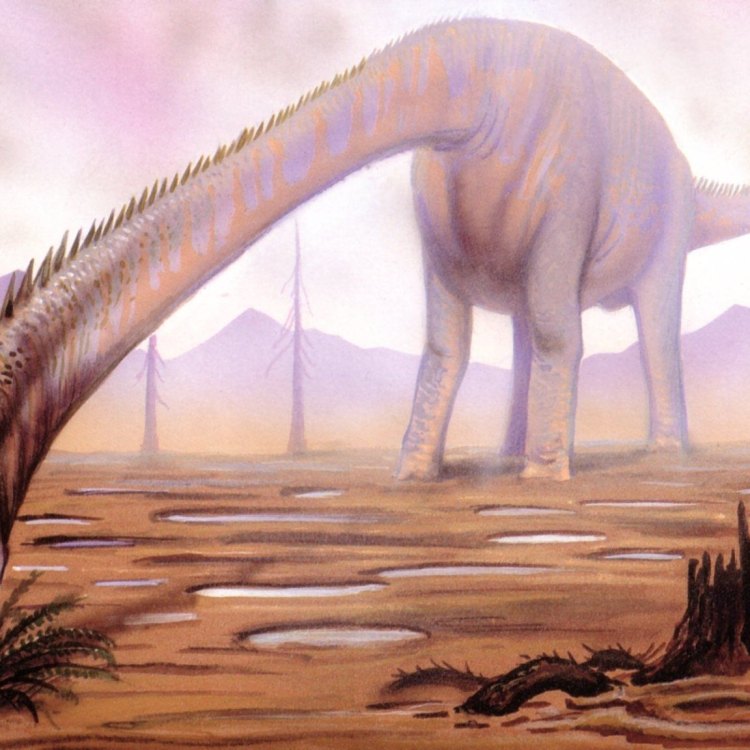
Barosaurus
- Adult Size: Very large
- Average Lifespan: Unknown
- Reproduction: Egg-laying
- Reproductive Behavior: Unknown
- Sound or Call: Unknown
- Migration Pattern: Unknown
- Social Groups: Unknown
- Behavior: Unknown
- Threats: Extinction
- Conservation Status: Extinct
- Impact on Ecosystem: None
- Human Use: Fossil
- Distinctive Features: Large size, long neck and tail
- Interesting Facts: One of the largest land animals that ever existed
- Predator: Unknown
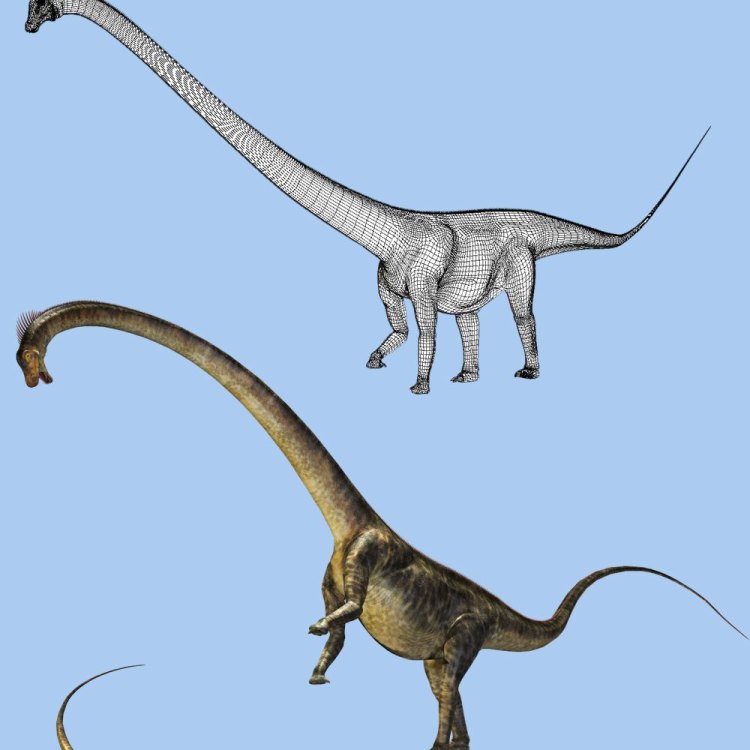
Barosaurus
The Enormous Barosaurus: A Long-Necked Giant Lost to Time
Have you ever wondered what it would be like to witness a creature so massive that it could tower over the trees and everything else in its path? A creature with a long, graceful neck and a powerful, swishing tail?Well, imagine no further, because we are about to introduce you to the Barosaurus – one of the largest land animals that ever roamed the Earth.
This magnificent creature lived during the Late Jurassic period, approximately 156 to 146 million years ago. Although its size is well-known, many other aspects of its life remain a mystery to us, making it a truly intriguing and enigmatic species.
So, let's delve into the world of the Barosaurus and uncover all the fascinating details about this long-necked giant PeaceOfAnimals.Com.
A Huge and Majestic Creature
As we mentioned before, the Barosaurus was an enormous animal. In fact, it is estimated to have been between 75 to 90 feet long and weighed around 15 to 20 tons. Its size was comparable to that of a blue whale, the largest animal on our planet today.But what made the Barosaurus truly impressive was its long neck and tail. Its neck alone could measure up to 30 feet in length, and its tail up to 45 feet. This made up most of its body length, leaving its thick, stocky body and short, stubby legs to support its enormous weight.
Its neck and tail were not only useful for balance and movement, but they also served as defensive mechanisms against predators. The long neck allowed the Barosaurus to reach leaves from high up in trees, while its powerful tail could whip around and fend off any potential threats.
Interestingly, while its neck and tail were long, its head was actually quite small in proportion to its body – around the size of a horse's head Bobcat. This is a stark contrast to other sauropod dinosaurs, whose heads were much larger in comparison.
Mysterious Lifespan and Reproduction
Despite knowing so much about its physical appearance, the lifespan and reproductive behaviors of the Barosaurus are still a mystery. This is mainly due to the scarcity of fossil evidence, making it difficult for scientists to make any concrete conclusions.It is believed that the Barosaurus, like other sauropod dinosaurs, laid eggs. But whether they used nests, how many eggs they laid, and how they cared for their young is still unknown.
As for its lifespan, there is no direct evidence to determine how long the Barosaurus lived. However, based on its size and other factors, it is estimated that it may have had a relatively long lifespan, possibly up to 100 years.
The Vanished Giant
One of the most tragic and intriguing aspects of the Barosaurus is its extinction. Like many other dinosaurs, it is believed that the Barosaurus met its downfall during the Cretaceous-Paleogene extinction event, approximately 66 million years ago.This event, also known as the K-Pg extinction, wiped out a vast majority of life on Earth, including up to 75% of all species. It is said that the cause of this extinction was a massive asteroid impact, which resulted in a global climate change and the formation of a thick dust cloud that blocked out the sun, causing a catastrophic chain reaction.
While we can never be certain, it is highly likely that the Barosaurus and all other dinosaurs were unable to survive these catastrophic environmental changes, leading to their eventual extinction.
A Species Lost to Time
Today, the Barosaurus is known only through the fossil remains that have been discovered and studied by paleontologists. Its extinction has forever left us with unanswered questions and a sense of wonder and fascination for this magnificent creature.But what about its impact on the ecosystem? Surprisingly, the loss of this giant did not have a significant impact on the environment. Unlike some other species, the Barosaurus did not play a vital role in controlling any particular type of vegetation or keeping any other species in check.
Therefore, its disappearance did not have any direct effects on the ecosystem. However, its extinction, along with all the other dinosaurs, did pave the way for the evolution and rise of many other species that we know today.
Collecting the Past: Human Use of Fossils
Despite being extinct for millions of years, the Barosaurus continues to fascinate and capture our imaginations today. Its massive size and unique features have made it a popular subject of study and an icon of the dinosaur world.But did you know that these fossils have also been used by humans? Since the discovery of its remains in the late 19th century, the Barosaurus has been extensively studied, with its fossils being collected and displayed in museums all over the world.
Its fossils have also been used to understand more about dinosaur anatomy and evolution, as well as to inspire art, literature, and films. Such is the impact of this amazing creature, that it continues to captivate us even in modern times.
Uncovering the Secrets of the Barosaurus
As we conclude our journey into the world of the Barosaurus, we can't help but feel a sense of awe and wonder for this incredible creature. Through its immense size, graceful movements, and fascinating features, the Barosaurus has captured our imaginations and left us with many unanswered questions.But one thing remains certain – this long-necked giant, a part of Earth's ancient history, will continue to intrigue and inspire us for generations to come. And as we continue to uncover more about this lost species, it only adds to the beauty and mystery of the natural world.

The Magnificent Barosaurus: A Herbivore of Enormous Proportions
Disclaimer: The content provided is for informational purposes only. We cannot guarantee the accuracy of the information on this page 100%. All information provided here may change without prior notice.

